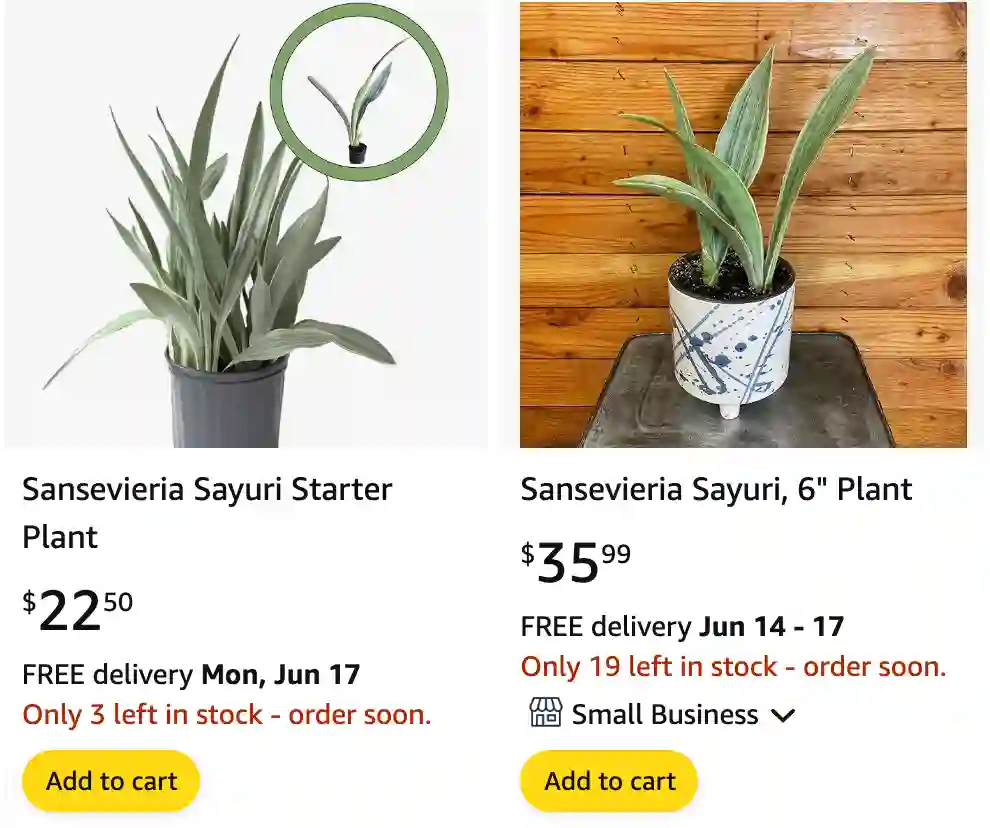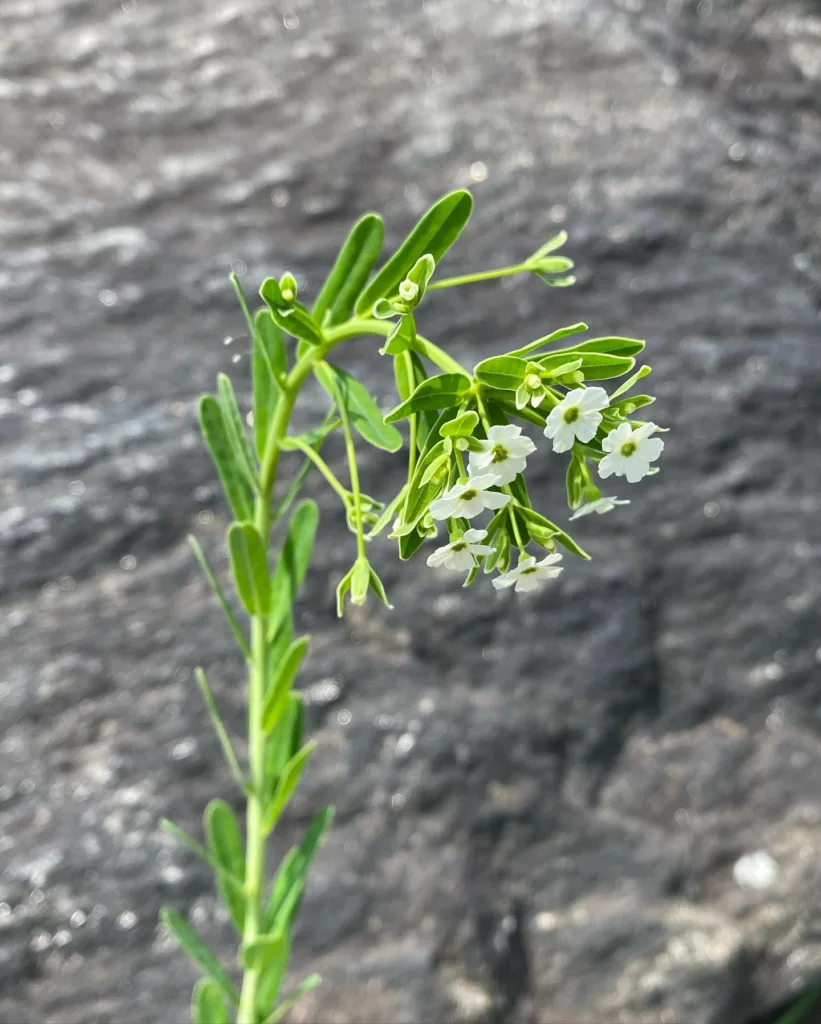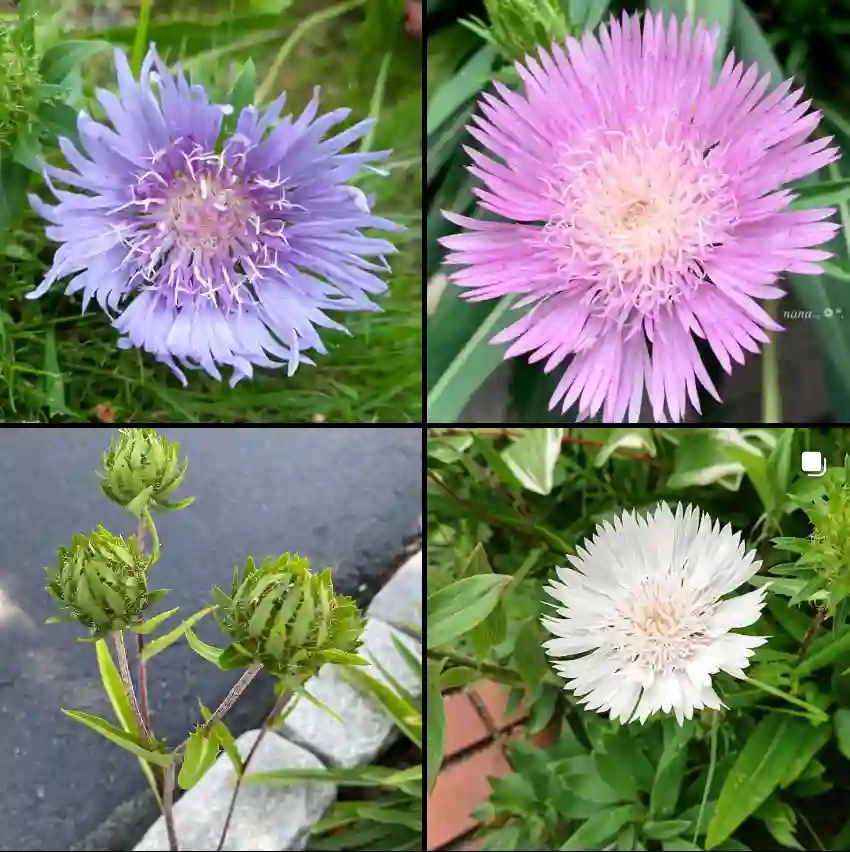
Sansevieria Sayuri: The Eye-Catching and Easy-Care Snake Plant
Hi, Ferb Vu here. Today, we’re diving into the world of the Sansevieria Sayuri, a stunning succulent that’s as easy on the eyes as it is to care for. Let’s address some of the most common questions about this houseplant superstar.
What Makes the Sansevieria Sayuri Special?
The Sayuri shines with its unique foliage. Unlike its greener snake plant cousins, the Sayuri boasts a vibrant green base adorned with bold, creamy white stripes that run vertically. This striking contrast creates a dramatic, almost graphic look that adds a touch of sophistication to any indoor space.
Beyond its looks, the Sayuri inherits the best traits of the snake plant family. It’s incredibly tough, tolerates low light conditions, and is known for its air-purifying properties.
Sun or Shade? Finding the Perfect Spot for Your Sayuri
While the Sayuri can handle low light, it won’t complain about some indirect sunlight either. Think of it as a flexible friend who adapts to your living space. Just avoid harsh, direct sunlight, which can scorch the leaves.
Here’s a tip: Observe your home’s natural light patterns. If you have a spot that receives a few hours of gentle morning or filtered sunlight, that’s perfect.
Watering Your Sayuri: Less is More
One of the biggest downfalls for new plant parents is overwatering. The Sayuri thrives on neglect when it comes to moisture. Let the soil dry out completely between waterings. This can range from weeks to even months, depending on the temperature and humidity in your environment.
When you do water, soak the soil thoroughly until excess water drains from the pot’s drainage holes. Avoid letting the plant sit in water as this can lead to root rot.
Perfect Potting Mix for Your Sayuri
Snake plants, including the Sayuri, prefer a well-draining potting mix. This allows excess water to escape freely, preventing root rot. A good option is a cactus or succulent mix, or you can create your own by combining regular potting soil with perlite or pumice for added drainage.
Sansevieria Sayuri vs Bantel
Comparing my Sansevieria Sayuri with the Bantel, I find that Sayuri’s unique silver-green leaves feel more refined and elegant, while Bantel’s upright, narrow stripes give off a more structured and classic vibe.
Sansevieria Sayuri vs Siam Silver
When I look at my Sansevieria Sayuri next to the Siam Silver, I appreciate Sayuri’s subtle beauty more, as Siam Silver’s almost metallic sheen can sometimes be too flashy for my taste.
Sansevieria Sayuri vs Moonshine
Between my Sansevieria Sayuri and Moonshine, I prefer the Sayuri’s delicate, fine lines over Moonshine’s bold, broad silvery leaves, which can sometimes dominate my space.
Common Issues and How to Fix Them
While the Sayuri is a resilient plant, a few things can go wrong. Here’s how to troubleshoot some common issues:
- Brown Leaves: This can be caused by overwatering, underwatering, or exposure to harsh sunlight. Adjust your watering routine and check the light conditions.
- Soft or Mushy Leaves: This is a clear sign of overwatering. Allow the soil to dry out completely before watering again. Consider repotting the plant in fresh, well-draining soil.
- Lack of Variegation: If the white stripes on your Sayuri start to fade, it might be getting insufficient light. Move it to a spot with slightly brighter indirect light.
Propagating Your Sansevieria Sayuri
The Sayuri, like other snake plants, can be easily propagated through leaf cuttings. Here’s a simple method:
- Choose a healthy leaf and cut it horizontally into sections.
- Allow the cuttings to callous over for a few days.
- Plant the cuttings upright in a well-draining potting mix, ensuring the calloused end is buried.
- Water lightly and keep the soil slightly moist until new growth emerges.
Conclusion: The Sayuri – A Plant for Everyone
The Sansevieria Sayuri is a stunning and easy-to-care-for succulent that injects a touch of elegance into any space. With its low-light tolerance and minimal watering needs, it’s a perfect choice for plant beginners and seasoned enthusiasts alike. So, bring a touch of the tropics indoors and enjoy the beauty of the Sayuri!
If i die, water my plants!



